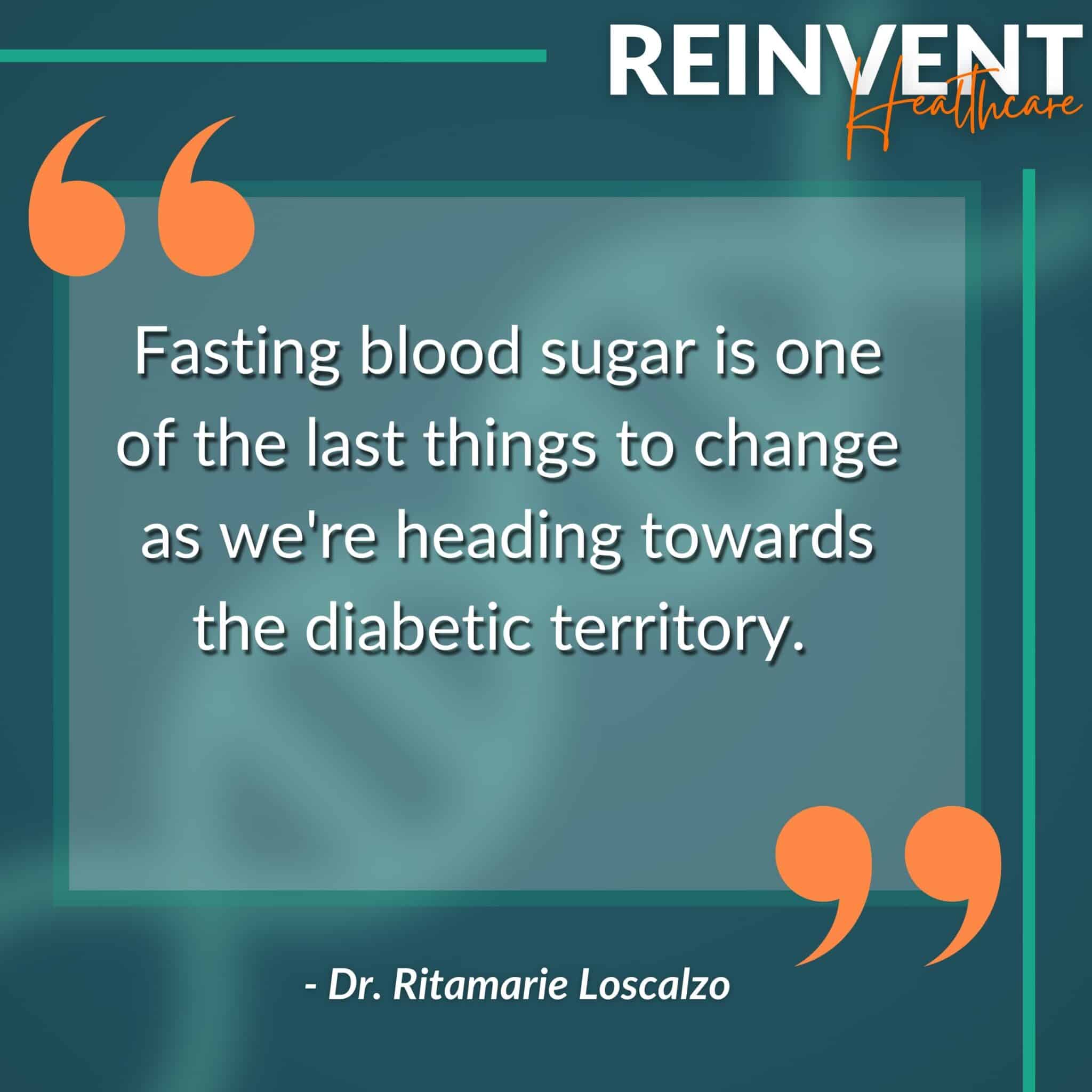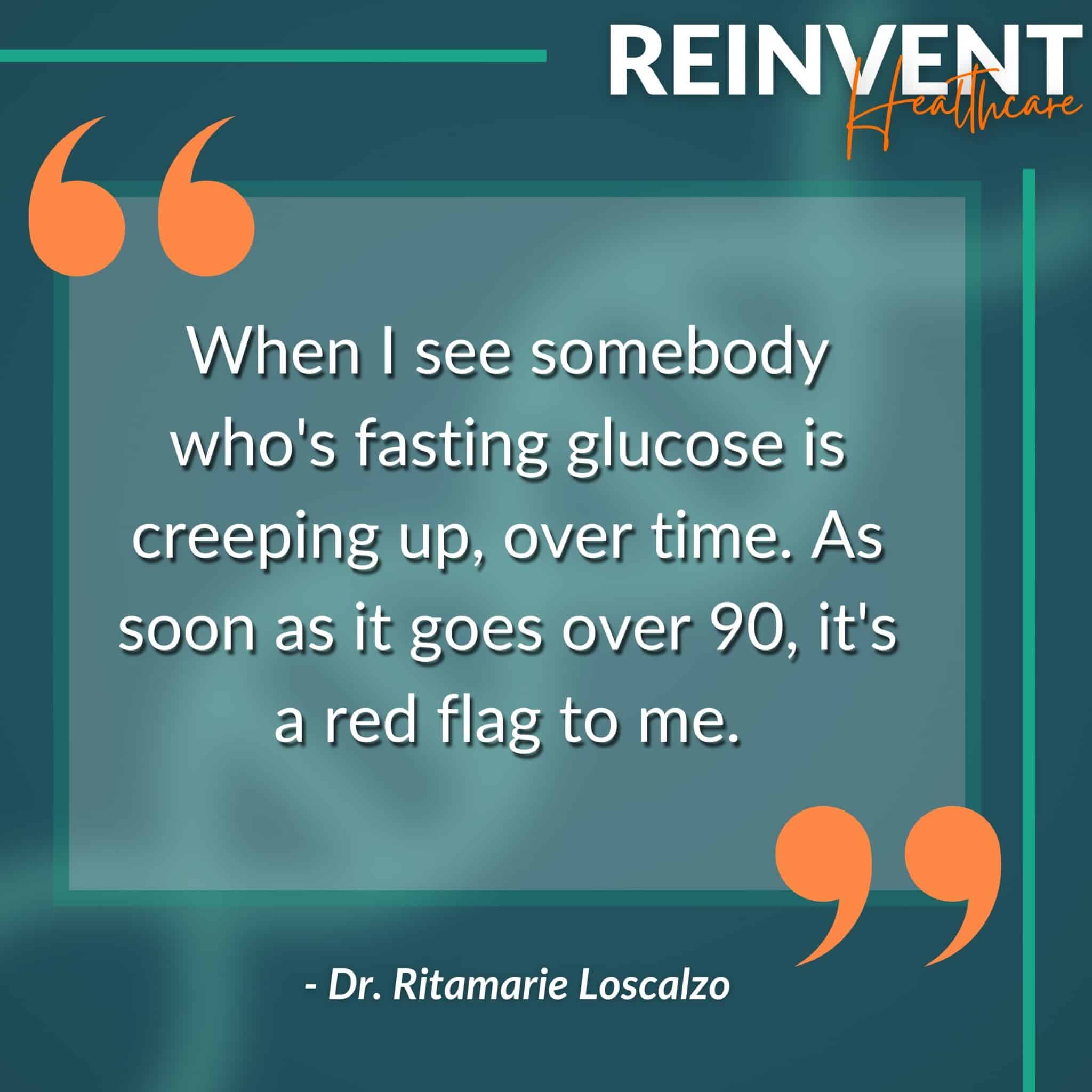What Doctors Are Taught About Blood Sugar Puts People In Danger
Are your clients—or even you—missing the early red flags of blood sugar imbalance? In this eye-opening episode of Reinvent Healthcare, Dr. Ritamarie Loscalzo exposes the shocking myths conventional medicine still teaches about blood sugar. If you think fasting glucose under 100 means you’re in the clear, think again.
What if your so-called “normal” blood sugar is silently setting the stage for heart disease, nerve damage, and other irreversible complications? Discover why fasting glucose is the last marker to change and how hidden markers like post-meal blood sugar spikes and insulin resistance are causing damage long before a diabetes diagnosis.
Learn the truth about continuous glucose monitors, overlooked lab markers, and game-changing strategies to protect your body and your clients from long-term damage. Click now to uncover the truth—and take control before it’s too late!
What You’ll Learn in This Episode:
- The critical dangers of fasting glucose over 90—even before reaching the “diabetic range.”
- Why conventional medicine ignores the early signs of blood sugar imbalances.
- The importance of additional markers like insulin levels, hemoglobin A1C, and C-reactive protein.
- How CGMs can help track blood sugar responses to food, exercise, and stress.
- The truth about hormone-hacking breakfasts and how they set the tone for stable blood sugar all day.
- Simple steps to empower your clients—or yourself—to reverse insulin resistance and avoid long-term damage.
Resources and Links:
- See the Full Transcript here
- Click here to order labs direct through Evexia
- Click here to order a continuous glucose monitor (CGM)
- Click here for the FREE CHECKLIST: Foods that Can Reverse Belly Fat, Fatigue, and Lack of Focus
- Download our FREE Hormone Hacking, Break Your Fast Recipes
- Join the Next-Level Health Practitioner Facebook group here for free resources and community support
- Grab your copy of the ReInvent 2025 Summit Replay and Slides here for a deep dive into the microbiome, lab testing and genetics
- Visit INEMethod.com for advanced health practitioner training and tools to elevate your clinical skills and grow your practice by getting life-changing results.
- Check out other podcast episodes on metabolic health here
Dr. Ritamarie Loscalzo’s Bio
Dr. Ritamarie Loscalzo is a pioneering expert in functional nutrition and metabolic health, with over 33 years of clinical experience. As the founder of the Institute of Nutritional Endocrinology, she’s dedicated to training health practitioners to uncover root causes and create lasting results for their clients. Her mission is to reinvent healthcare by empowering practitioners to integrate personalized, science-backed approaches to health restoration.
Ready to transform your practice or personal health? Dive into this episode and discover the tools to make it happen!
Transcript
Dr. Ritamarie Loscalzo
Welcome back. In this episode, we're going to talk about the common misconceptions that conventionally trained doctors have about blood sugar.
So one of the common misconceptions that conventional doctors are taught in medical school about blood sugar is that it only matters if the person is heading towards diabetes or close to diabetes.
So for example, they look at a person's fasting blood sugar. First of all, they say fasting blood sugar is the meaningful number and the only thing we really need to look at for a person. And until it goes above 100, no problem. Everybody's fine. Everything's good, because that's when they end up in the range where it's diagnosable as insulin resistance, which is pre-diabetes. So that's a big misconception and that it doesn't matter what the blood sugar is after meals until after the person becomes diabetic.
And then we can look at -How high does it go? What's the two hour glucose number? But they're looking at it all the wrong way. They're not helping people to see, are they heading in the direction of blood sugar imbalance? And what they're not taught is that whenever that blood sugar starts to creep up, in fact, whenever it's over 90, there's an increased risk of cardiovascular disease.
When it's over 100, then we're starting to see damage to the beta cells in the pancreas that produce insulin. And whenever it's getting in the range of 120 and a little bit above, we're starting to see retinopathies and neuropathies and even nephropathies. So these are all super important things that are not taught and that put people in danger.
So some of the other things that I see as people do start to get their fasting blood sugars creeping up over 100, meaning between 100, 120, 125, that they're insulin resistant or pre-diabetic, is that they're not paying attention to other markers that show blood sugar imbalance. So for example, this person with 104 fasting blood glucose may have an insulin level that's through the roof.
Dr. Ritamarie Loscalzo (02:12)
Insulin levels through the roof are predisposing to our disease, high blood pressure, stiffening of the arteries and so many more things. So they're not looking at that.
They're also not looking at things like hemoglobin A1C, which gives us more of an average of the glucose over the course of several months. So three months to be exact for most people. So what happens is people are led to believe that everything's OK, just lose weight, just stop eating lollipops and soft drinks, and everything's going to be okay. When in fact, there are so many things that this person needs to be paying attention to, and they're at much higher risk than the doctor is leading them to believe.
So we need to be looking at some additional lab test markers, and we need to be looking at what's happening to their blood sugar after meals, because quite frankly, fasting blood sugar is one of the last things to change as we're heading towards the diabetic territory.
When I see somebody who's fasting glucose is creeping up, and I don't mean just on one occasion, I mean, there's some consistency there. Over time, the last three times we've seen them or measured it, or they tell me that they're measuring it at home, because more and more people are becoming aware and measuring their own glucose at home.
So it starts to go up. As soon as it goes over 90, it's a red flag to me. So I will explain to that person what the dangers are of fasting glucose over 90, what the dangers are if they let it keep going, and then what other tests we can do to see what imbalances might be leading there.
So I would be running a fasting insulin. I would be running a hemoglobin A1C. Then I'd be looking at inflammatory markers like homocysteine and C-reactive protein to see where they are there. And that way I can get a sense of, is this just a freak happening that they're not really always that way? Or is this consistent?
The other thing that I would highly recommend they do is to get a continuous glucose monitor. A continuous glucose monitor is a little sensor that you wear on your skin. And it basically is taking a sampling of the blood sugar.
Dr. Ritamarie Loscalzo (04:34)
It's actually the interstitial fluids, but it's a good surrogate for the glucose, right? So we measure it in the interstitial fluid, and we get a sense to see what's happening in response to food, what's happening in response to exercise, what's happening in response to how good a night's sleep they got, what's happening in response to stress.
And we can then guide people to make changes in their habits, in their diet, in their lifestyle to help keep the blood sugar under control before it becomes a diagnosable disease.
Because once it's a diagnosable disease, even though type 2 diabetes has been shown to be reversible, we don't want to wait till we get there. Because once we get there, we know that already a lot of the side effects that we see in diabetes, the complications like peripheral neuropathies and retinopathies and stiffening of the blood vessels, they've already started. And most likely they've started decades before the person's fasting glucose gets into the hundred range.
So we need to step in and coach people on their diet and their lifestyle habits so that they can keep their blood sugar under control.
So there's so much that people can do, that you can do, that you can do for your clients and that you can recommend if you are a practitioner to help get blood sugar under control before it gets too late, before we have the consequences of the long-term elevated blood sugar and long-term elevated insulin.
We should get the testing done. With the advent of all kinds of direct access labs these days, we can put a link down below to a direct access lab that you could just go in there, and you can order the test yourself.
I would say, check your A1C, check your insulin and then get either a continuous glucose monitor that requires a prescription, although we'll put a link down below of a place where you can get one without a prescription, or you ask your doctor for one, or you get the old fashioned glucometer where you prick your finger. Most people don't like to prick their finger as frequently as we want them to to really get a good idea of what's going on in response to meals.
Dr. Ritamarie Loscalzo (06:57)
What's going on in response to stress and exercise, either over or under exercising, sleep, et cetera. So I recommend you take charge. You don't leave it to your doctor to take you in the direction of health. Doctors know how to get you out of disease symptoms, but they don't know how to get you in the direction of health. They were never taught this in medical school. It's a disease management, symptom management system.
So take charge, learn whatever you can, watch more of our videos, learn what you can, get your own glucose monitor, get your CGM, they're easy to get, like I said, links down below, and also get your labs tested. Hemoglobin A1c, insulin, C-reactive protein, because inflammation can create a problem with the insulin sensitivity of the cells.
And also I have a list which you can get the link to down below. It is a checklist, it's several pages long of various and sundry foods and herbs, easy to get, nothing esoteric that you can use and start incorporating on a regular basis to improve the sensitivity of your cells to insulin.
So in my opinion, and in my experience in over 33 years of clinical practice in working with people and having led tens of thousands of people through insulin resistance and blood sugar balancing programs, I think everybody needs to take a look at this, especially if you are having difficulty with extra belly fat, you are brain fogged, you're exhausted.
You have a family history of heart disease or diabetes or any other kinds of autoimmune or inflammatory conditions. You need to take charge now, before it becomes a disease. Take charge now, get these tests done, get your glucose meter or get a CGM and just take steps in the direction of optimal metabolic health. And what I mean by that is you figure out what's right for you.
Dr. Ritamarie Loscalzo (09:05)
Some people need a lower carb diet. Some people actually do better on a higher carb, low fat diet. Some people do well on a keto-ish, I call it a keto-ish type diet that is higher in whole foods, plant-based fats loaded with vegetables and is nourishing for every cell in the body.
So we all need to look at what is right for me and take charge now before you become diseased. So starting the day right is so important. The average American starts the day with a cup of coffee and a donut, sugar in the coffee, things that are blood sugar unfriendly.
I recommend a very specific set of foods or combination types of foods that you can use, call them hormone hacking breakfasts. Like the way that you start your day is the way that you live your day. Starting your day with foods that are going to keep you stable, keep your hormones comfortable throughout the day, not have these highs and lows throughout the day that leave you with cravings.
So we have a little guide that's called Hormone Hacking, Break Your Fast recipes. And I renamed it from breakfast recipes to break your fast, because so many people are doing intermittent fasting and skipping breakfast. So it doesn't matter when you have this first meal, it's your break your fast meal.
And there's very specific constituents, that five constituents of that meal that make it so important for you to make it through the day. And it's all in the free guide. And you can check down below for that.
In order to follow this conversation and continue this conversation, if you're interested in learning, I would send you over to our website, drritamarie.com. And I would invite you to check out the resources that we have there and look for a program I put together called Fasting While Feasting, which helps you to jumpstart your journey into the world of keeping balanced blood sugar and insulin.
As health practitioners interested in holistic health, you are the future of healthcare. Those of us who are putting the care back into healthcare, those of us who are focused against symptom suppression only and are really helping people to get to the root causes.
I've dedicated my life to empowering people to take back control of their health and to supporting health practitioners to truly help people get to the root causes of their issues.
So if you'd like more in-depth training and resources to take your practice to the next level, download our free guide to metabolic health and visit our site at www.inemethod.com. We welcome you to join us in the movement to reinvent healthcare. And until next time, shine on.








